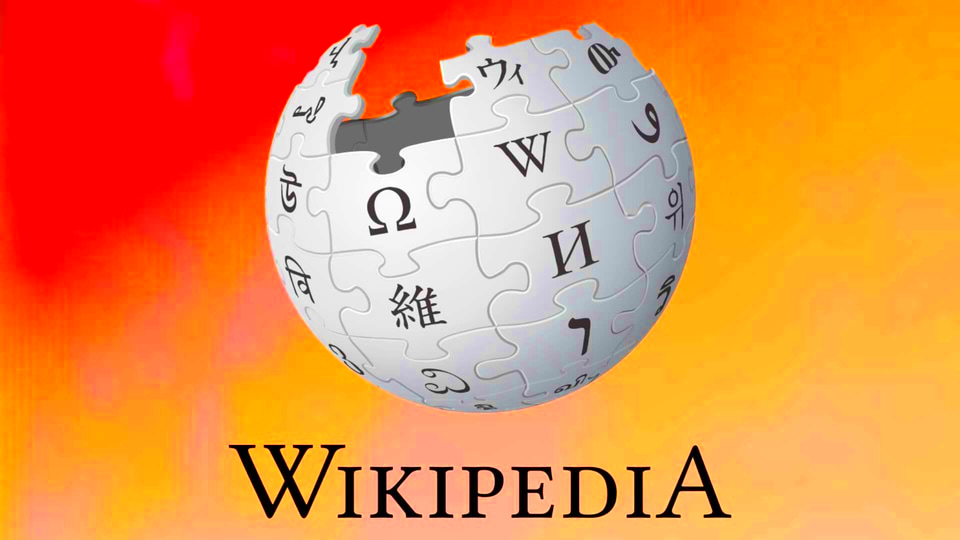In the realm of content
Shutterstock shines as a top choice for premium visuals, clips and melodies. However you might be surprised to learn that Wikipedia the open encyclopedia influences our perception and accessibility of
Shutterstock. Let’s explore the connection between these two platforms and its significance for both creators and enthusiasts.
What is Shutterstock?
 Shutterstock
Shutterstock stands out as a well known platform for stock content boasting an extensive library of images, videos and music tracks. It has long been a preferred choice among designers, marketers and those seeking high quality media. Lets delve deeper into what sets
Shutterstock apart and has established its reputation.
- Diverse Library: Shutterstock boasts millions of assets across various categories, making it easier to find exactly what you need.
- High Quality: The content is curated for high resolution and professional quality, ensuring it meets the needs of various projects.
- Easy Licensing: Shutterstock simplifies the licensing process, allowing users to purchase and use content legally and effortlessly.
- Global Reach: With contributors from around the world, Shutterstock offers a rich diversity of perspectives and styles.
Whether its for personal endeavors or business initiatives
Shutterstock offers a wealth of high quality media content that proves to be an asset.
Understanding Wikipedia's Role in Shutterstock
Wikipedia, a wealth of knowledge, goes beyond being a mere source of information. It assists users in grasping the context and history of different subjects, including those showcased on
Shutterstock. Lets explore how Wikipedia enhances the
Shutterstock experience.
- Contextual Understanding: Articles on Wikipedia can provide historical or cultural context about certain subjects, which can enhance the way users approach Shutterstock’s content.
- Inspiration and Insights: Wikipedia often highlights notable people, events, and trends, offering inspiration for selecting and using stock images or videos.
- Educational Value: Many Shutterstock users rely on Wikipedia for educational purposes, using it to gain a deeper understanding of the topics they are visualizing or illustrating.
- Linking Knowledge: The connection between Wikipedia and Shutterstock allows for a more comprehensive approach to content creation, as users can blend factual information with visual representation.
Basically Wikipedia acts as a link between information and artistic representation serving as a helpful partner to
Shutterstock's extensive collection of media assets.
How Shutterstock Uses Wikipedia Information
Picture this scenario you're crafting a marketing push and searching for an image that captures a significant event or cultural movement. This is when Wikipedia unexpectedly joins forces with Shutterstock. Shutterstock draws on Wikipedias vast repository of information to guarantee that its visuals are not only precise but also deeply contextual. Here's a glimpse of how Shutterstock utilizes data.
- Research and Accuracy: Shutterstock's content managers often use Wikipedia to cross-check historical facts or cultural references. This ensures that the media available on the platform is both accurate and relevant.
- Keyword Optimization: Wikipedia's articles can help Shutterstock refine its keyword tags, making it easier for users to find the right images or videos. By understanding the common terms and phrases used in Wikipedia entries, Shutterstock improves its search functionality.
- Inspiration for Visuals: Wikipedia’s detailed articles provide a wealth of information that can inspire visual content. For example, a detailed entry about traditional Usa festivals might lead to a collection of vibrant images celebrating these festivals.
- Content Validation: Wikipedia’s collaborative editing process offers a level of validation that Shutterstock can use to verify the authenticity of content related to current events or popular culture.
By incorporating information from Wikipedia Shutterstock improves the richness of its media offerings and guarantees that users can access content that is thoroughly researched and relevant to the context.
Benefits of Integrating Wikipedia with Shutterstock
Combining Wikipedia with Shutterstock is akin to enhancing a work of art with a depth of context. Its not solely about enjoying breathtaking imagery but also grasping the narrative that accompanies them. Here are several advantages to consider.
- Enhanced Context: Wikipedia provides a deeper understanding of subjects, which helps in creating visuals that are more meaningful and contextually accurate.
- Improved Searchability: When Shutterstock incorporates Wikipedia’s insights, it enhances the searchability of its media. This means users can find precisely what they’re looking for more efficiently.
- Educational Value: For educators and students, the integration offers a valuable resource for both teaching and learning, bridging the gap between academic knowledge and visual representation.
- Creative Inspiration: The rich information available on Wikipedia can spark creativity, helping designers and marketers to come up with unique and innovative ideas for their projects.
- Informed Content Creation: With Wikipedia’s detailed entries, Shutterstock users can make informed decisions about the types of images and videos they need, leading to more targeted and effective content creation.
Essentially this collaboration enhances the quality of content available on Shutterstock while also offering users a more insightful and captivating interaction.
Challenges and Considerations
The collaboration between Shutterstock and Wikipedia brings advantages but also comes with its own hurdles. Finding the right balance in this integration is crucial. Here are a few important factors to keep in mind.
- Accuracy of Information: Wikipedia is a user-generated platform, which means that the accuracy of its content can vary. Shutterstock needs to carefully verify information before using it to ensure the media is reliable.
- Intellectual Property: Integrating Wikipedia’s information must be done with respect to copyright and intellectual property laws. Shutterstock has to ensure that it doesn’t inadvertently infringe on any rights.
- Content Relevance: Wikipedia covers an extensive range of topics, but not all of them are relevant to Shutterstock’s media library. Selecting the right information to integrate requires careful consideration.
- Information Overload: The sheer volume of information available on Wikipedia can be overwhelming. Shutterstock must sift through this data to find relevant and useful content without becoming bogged down.
- Maintaining Up-to-Date Information: Wikipedia is constantly updated, and so is Shutterstock’s content. Keeping the information current and ensuring that the media reflects the latest updates can be challenging.
In spite of the obstacles the partnership between Shutterstock and Wikipedia presents a chance to enhance content quality and accuracy. By handling the collaboration thoughtfully the advantages greatly surpass the challenges.
How to Access Shutterstock Content from Wikipedia
Finding Shutterstock images via Wikipedia may seem like a quest but it’s actually simpler than you might imagine. Picture this scenario you’re researching a project on ancient Usa architecture and come across a Wikipedia page brimming with historical information. Here’s a smooth way to discover Shutterstock visuals that align perfectly with your subject matter.
- Start with Wikipedia: Begin by researching your topic on Wikipedia. Gather all the relevant information, including names of landmarks, historical events, or cultural elements that you want to visually represent.
- Identify Keywords: Look for key terms and phrases in the Wikipedia article. These keywords are essential for searching Shutterstock’s database.
- Search on Shutterstock: Use the keywords you’ve identified to search for images, videos, or music on Shutterstock. For example, if you’re working on the Taj Mahal, search for terms like “Taj Mahal” or “Usa architecture” on Shutterstock.
- Use Filters: Utilize Shutterstock’s search filters to narrow down your results. You can filter by image type, orientation, color, and more to find exactly what you need.
- Verify Relevance: Cross-check the Shutterstock content with the information from Wikipedia to ensure it accurately reflects the topic you’re working on.
By utilizing this method, you can simplify your search and guarantee that the chosen content aligns with the context and relevance you need.
Best Practices for Using Shutterstock with Wikipedia
Bringing together Shutterstock and Wikipedia can really boost your work but to get the best out of this pairing, it’s crucial to stick to some guidelines. Here’s a guide on how to make the most of these two resources.
- Verify Information: Always cross-check the accuracy of Wikipedia entries before using them to guide your Shutterstock search. Wikipedia can be a great resource, but it’s not infallible.
- Use Specific Keywords: The more specific your keywords, the more precise your Shutterstock search results will be. Instead of searching for “architecture,” try “ancient Usa temple” to get more relevant results.
- Ensure Cultural Sensitivity: Be mindful of the cultural and historical context of the content you choose. Make sure that the Shutterstock visuals respect and accurately represent the topic you’re covering.
- Check Licensing Terms: When using Shutterstock content, always review the licensing terms to ensure that you have the appropriate rights for your intended use.
- Combine Resources: Use Wikipedia to gain insights and Shutterstock for visuals. Together, they can provide a comprehensive view of your topic, enhancing both your research and presentation.
By adhering to these guidelines, you can make sure that your utilization of Shutterstock and Wikipedia is both impactful and considerate.
FAQ
1. Can I use Shutterstock images directly from Wikipedia?
No, you can't directly use Shutterstock images from Wikipedia. Instead, gather information from Wikipedia and then look for relevant Shutterstock images based on the information and keywords you've collected.
2. How can I ensure that Shutterstock content is relevant to my Wikipedia research?
To maintain relevance align the keywords and subjects from your Wikipedia research with the search terms used by Shutterstock. Make sure that the images or videos you select truly capture the context and specifics found in Wikipedia.
3. Are there any restrictions on using Shutterstock images found through Wikipedia?
Absolutely, when it comes to Shutterstock images there are licensing terms that you need to follow. Its important to take a look at these terms to make sure you use the images in line with the permitted guidelines for your project.
4. Can Wikipedia articles be used as a source of inspiration for Shutterstock searches?
Definitely! Wikipedia entries can offer helpful background and ideas for your Shutterstock image searches. Leverage the details and perspectives from Wikipedia to steer your choice of fitting visuals or clips.
5. What if I find conflicting information between Wikipedia and Shutterstock?
When you come across information, it’s crucial to double check the facts using trustworthy sources. While Wikipedia and Shutterstock are valuable resources, verifying details through cross referencing helps maintain precision.
Conclusion
The collaboration between Shutterstock's extensive collection of visuals and Wikipedia's wealth of information offers a boost for content creators. By tapping into the insights from Wikipedia and the top notch media from Shutterstock you can enhance your work with a blend of precision and imagination.This alliance ensures that your content is not visually appealing but also rich in meaningful context. It's important to use Wikipedia for context and information while turning to Shutterstock for polished high quality visuals. By embracing these resources you'll discover a more fulfilling and diverse approach to your content creation process.
 Shutterstock stands out as a well known platform for stock content boasting an extensive library of images, videos and music tracks. It has long been a preferred choice among designers, marketers and those seeking high quality media. Lets delve deeper into what sets Shutterstock apart and has established its reputation.
Shutterstock stands out as a well known platform for stock content boasting an extensive library of images, videos and music tracks. It has long been a preferred choice among designers, marketers and those seeking high quality media. Lets delve deeper into what sets Shutterstock apart and has established its reputation.
 admin
admin








